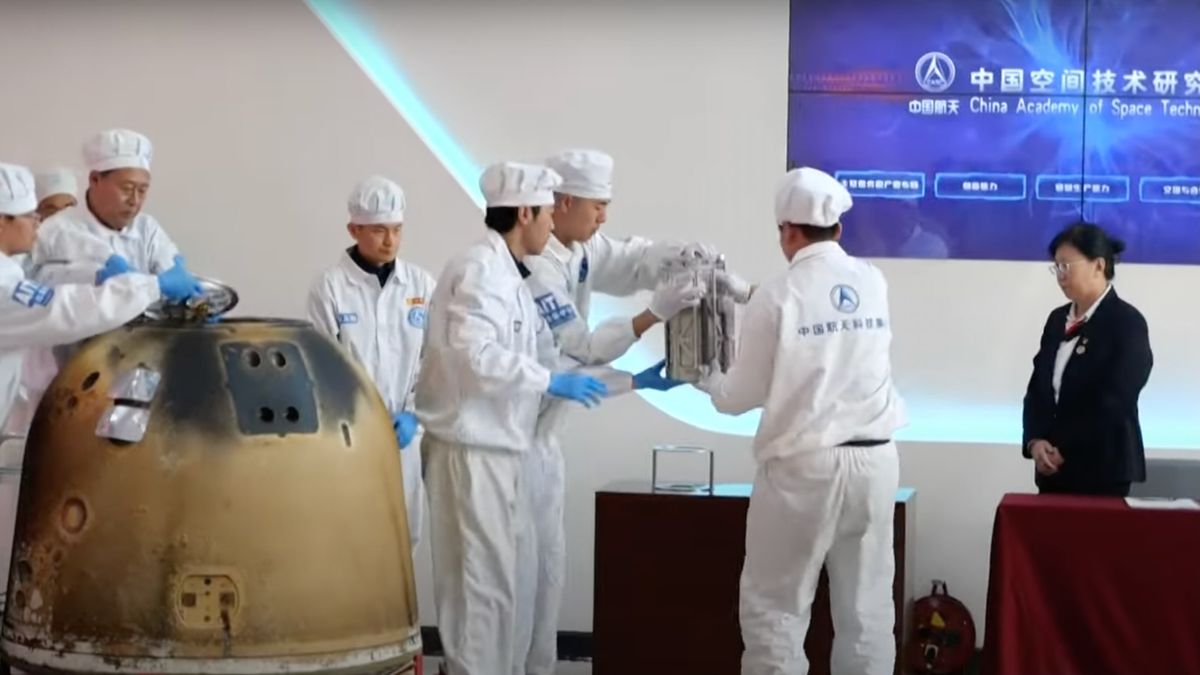China’s Chang’e 6 mission return capsule has been transferred to Beijing and opened to access its precious cargo.
The return capsule made its fiery plunge through the atmosphere on June 25 before landing in the grasslands of Inner Mongolia. The event brought the 53-day-long Chang’e 6 mission to a successful conclusion, delivering the first-ever lunar far side samples to Earth.
The capsule was airlifted to Beijing early Wednesday (June 26), to the China Academy of Space Technology (CAST), which designed the mission spacecraft. Once there, a ceremony was held which saw researchers open the return capsule and examine key technical indicators, according to state broadcaster CCTV.
A sample container, holding up to 4.4 pounds (2 kilograms) of material from the moon, was then secured for the next stage of its journey. The samples will be transferred to specially developed facilities for storage, analysis and distribution for research.
As with the samples collected from the moon’s near side by Chang’e 5 in 2020, the materials will be sorted and then opened to applications for research from scientists and institutions across China. The materials will likely be made available to applications from international groups and researchers after two years. NASA-funded researchers received special clearance late last year to apply for access to lunar samples.
Related: What happened to China’s Chang’e 6 lander on the moon’s far side?
Research and discoveries from Chang’e 5 include a “perplexing combination” of minerals, the nature of lunar volcanism, an unexpected amount of water and a new mineral named Changesite-(Y).
The new Chang’e 6 far side samples could provide unprecedented insights into why the near and far sides of the moon are so different.

Dr. Thomas Hughes is a UK-based scientist and science communicator who makes complex topics accessible to readers. His articles explore breakthroughs in various scientific disciplines, from space exploration to cutting-edge research.








